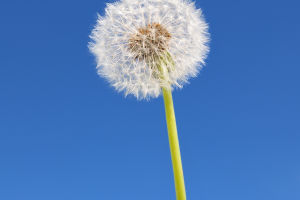Leaf veins, those seemingly trivial lines that weave across the foliage, harbor a wealth of mysteries and the essence of life.
While they may appear mundane, they are the conduits of nature’s secrets and the powerhouse of biological revelations.
To begin with, veins, intricately woven within the leaves of plants, play pivotal roles in their growth and development. Composed of vascular bundles and associated tissues, these veins traverse the mesophyll, forming a network that sustains the leaf's structure and function.
Illuminated by the sun's backlight, these veins emerge distinctly, resembling a meticulously drawn map on the leaf's canvas. Serving as the leaf's framework, they provide structural support akin to an umbrella's skeleton.
Moreover, veins serve as conduits for nutrient transportation, facilitating the upward movement of essential substances absorbed by the roots.
From the root system, nutrients traverse upwards through the stem, branching out into smaller vessels until reaching every nook and cranny of each leaf. Much like the human circulatory system, veins serve as the lifelines of plants, ensuring their vitality and vigor.
Veins exhibit diverse arrangements within leaves, a phenomenon known as venation. Three primary venation patterns exist: reticulate, parallel, and dichotomous. Reticulate venation, characterized by intricate networks of veins, is commonly observed in dicotyledonous plants.
Leaves adorned with reticulate veins, such as those found on oak trees, exhibit a captivating complexity reminiscent of nature's artwork. Monocotyledonous plants, like lilies, boast parallel venation, where midribs and lateral veins run approximately parallel, converging towards the leaf apex.
Meanwhile, gymnosperms, exemplified by the ginkgo tree, feature dichotomous venation, with veins diverging and forking throughout the leaf surface. This diversity in venation patterns showcases nature's ingenuity and adaptation across plant species.
The resilience of leaf veins is remarkable. Despite the challenges posed by wind, rain, and insect infestation, leaf veins endure, steadfastly preserving their structural integrity.
Their robust composition, resistant to insect predation, ensures their longevity even after the mesophyll decays. Insects, upon feasting on the tender leaf tissue, often leave behind remnants of tough and indigestible vein tissue, serving as natural bookmarks crafted by nature.
In conclusion, while leaf veins may seem inconsequential, they epitomize the profound essence of life and harbor a trove of mysteries waiting to be unraveled. Beyond serving as mere indicators of plant growth, they embody the essence of biology, unraveling the intricacies of nature's design.
As we embark on future scientific endeavors and ecological preservation efforts, let us accord due reverence to leaf veins, delving deeper into their enigmatic realms and safeguarding the delicate balance of Earth's ecosystems.


